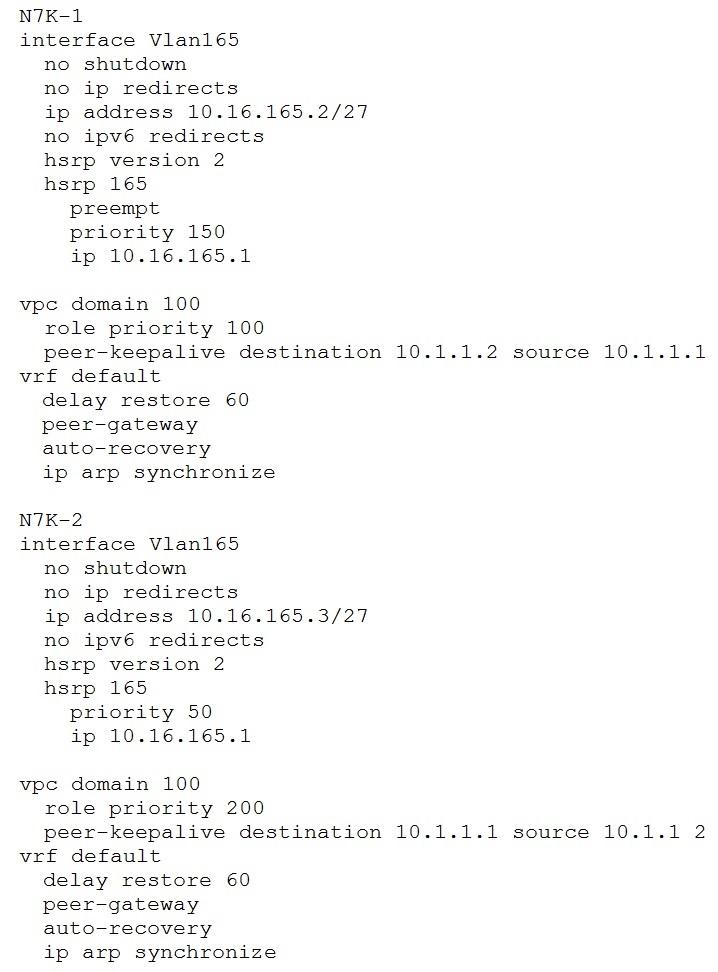Refer to the exhibit.
Which statement about the default gateway configuration of the vPC is true?

- Either switch can act as the active default gateway.
- N7K-1 acts as the default gateway for all traffic.
- N7K-2 forwards traffic that is destined for the default gateway by using the peer link.
- N7K-2 acts as the default gateway for all traffic.
Answer(s): A
Explanation:
In normal Hot Standby Router Protocol operation, the active HSRP interface answers ARP requests, but with a vPC, both HSRP interfaces (active and standby) can forward traffic.
The most significant difference between the HSRP implementation of a non-vPC configuration and a vPC configuration is that the HSRP MAC addresses of a vPC configuration are programmed with the G (gateway) flag on both systems, compared with a non-vPC configuration, in which only the active HSRP interface can program the MAC address with the G flag. Given this fact, routable traffic can be forwarded by both the vPC primary device (with
HSRP) and the vPC secondary device (with HSRP), with no need to send this traffic to the
HSRP primary device. Without this flag, traffic sent to the MAC address would not be routed.
Reference:
https://books.google.com/books?id=5VXUDwAAQBAJ&pg=PT161&lpg=PT161&dq=%22normal+Hot+Standby+Router+Protocol+operation,+the
+active+HSRP%22&source=bl&ots=dbSA3yl8BW&sig=ACfU3U1uGuplof1lJ4GF-
0VVkqpjjFz0yA&hl=en&sa=X&ved=2ahUKEwia0MLTpvf4AhWmFzQIHQyCCtcQ6AF6BAgCEAM#v=onepage&q=%22normal%20Hot%20Standby%20Router%
20Protocol%20operation%2C%20the%20active%20HSRP%22&f=false